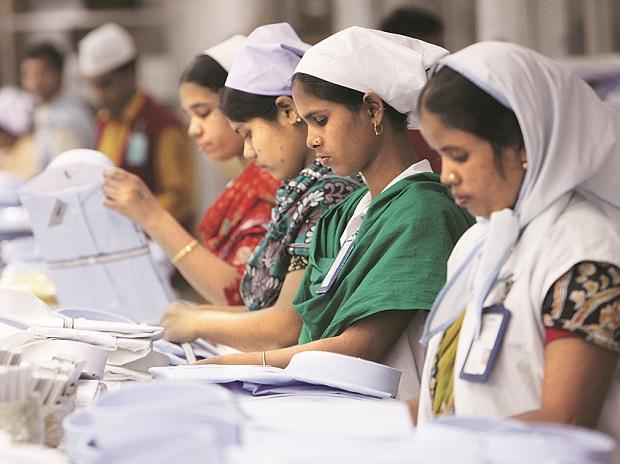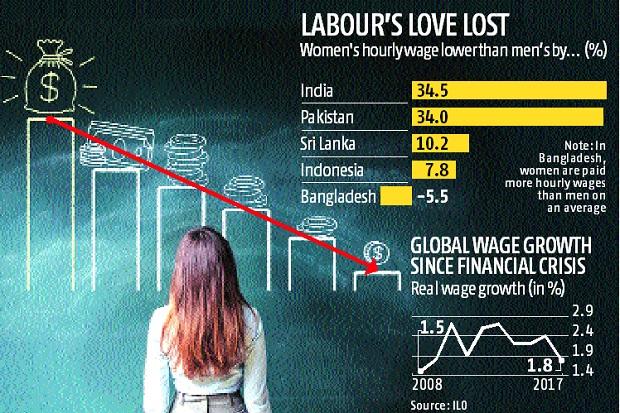Women are paid the most unequally in India, compared to men, when it comes to hourly wages for labour. On average, women are paid 34 per cent less than men, a recent report by the International Labour Organization (ILO) has found. This gap in wages, known as the gender wage gap, is the highest among 73 countries studied in the report.
The trend holds true globally as well, but with lower levels of inequality among the sexes, where on average, hourly wages of women are 16 per cent less than those of men. Inequality is higher in monthly wages, with a gap of 22 per cent.
These findings are presented in the flagship publication of the ILO, the Global Wage Report 2018-19, which was released on November 26.“In most countries, women and men differ significantly in respect of working time – specifically, that part-time work is more prevalent among women than among men,” the report said.
With empirical evidence that gender wage gap is visible even with women with higher levels of education, the report advocated that “emphasis needs to be placed on ensuring equal pay for women and men”.
This gender wage gap has remained unchanged at 20 per cent from 2016 to 2017. Women are paid higher hourly wages than men in Bangladesh.
But in 2017, the gender gap was accompanied by a near-stagnation in wages. Real wage growth has been the lowest since 2008, the year of the financial crisis.
In real terms (adjusted for price inflation), global wage growth declined to 1.8 per cent in 2017, from 2.4 per cent in 2016. The findings are based on the data from 136 countries.
In advanced economies (G20), real wage growth declined from 0.9per cent in 2016 to 0.4per cent in 2017, meaning near stagnation. By contrast, in emerging economies and developing G20 countries, real wage growth dipped marginally from 4.9per cent in 2016 and 4.3per cent in 2017.
This global stagnation in real wages comes in line with the global growth forecast, which was revised lower by the International Monetary Fund earlier.
The slowdown in wages at the level of hourly labour wages is in stark contrast with organised sector salaries.
Business Standard had reported earlier that salaries in the organised sector are rising faster than new job creation in the last few years.The earlier reports had noted that gender pay gap increases with the average wage of enterprises: the higher the average wage, the wider the gender pay gap. The gap among chief executive officers was found to be about 40 per cent — twice as high as the overall gender pay gap, which is about 20 per cent.
Article Credit:- BusinessStandard


